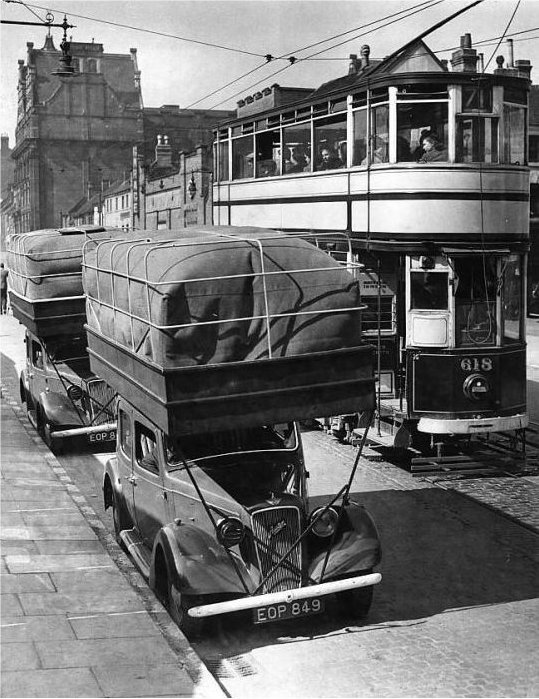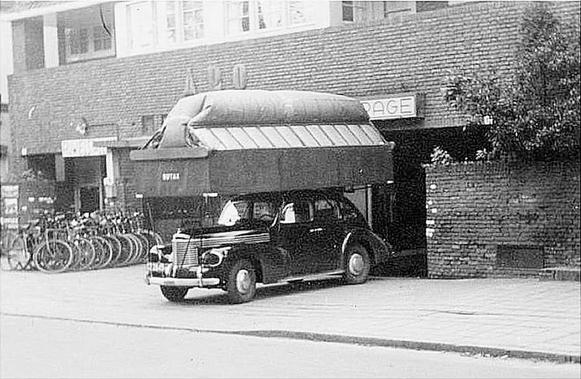Contrary to popular belief, vehicles run with natural gas was very common in the early 1900s in America and parts of Europe. However, this gas was not derived from petroleum (as in the case of CNG in modern vehicles) which became intensely scarce during the two World Wars, but from two unconventional sources—wood and coal.
Wood and coal gas are derived from burning wood and coal respectively in a oxygen-deprived environment to produce a gas rich in hydrogen and carbon monoxide. In wood gas vehicles, a wood gas generator called a gasifier, which is essentially a furnace, is tagged along with the vehicle in a trailer. The gas produced by burning wood is fed via pipes directly to the vehicles’ internal combustion engine. This kind of modification became very popular during World War 2 due to severe gasoline shortage.

The manufacture of coal gas, on the other hand, is a complicated process and is carried out in large furnaces in gasification plants. There are no miniature gasification units that vehicles can carry along in trailers. Instead, coal gas vehicles carry the gas in enormous gas bags mounted on top of vehicles. These gas storage bags were made of silk and other fabrics, soaked in a rubber solution to prevent leakage.
Compressed gas in metal tanks were not used because carbon monoxide, one of the component of coal gas, disintegrates quickly when compressed, while the other flammable component, hydrogen, is notoriously difficult to contain under pressure and leaks away through steel tanks when compressed. Besides, fabric bags were much cheaper and easier to build than metal tanks. The most obvious drawback is that the bags had to be comically large. Coal gas also have much lower energy density that LPG or CNG. To replace one liter of gasoline, two to three cubic meters of gas was needed. The vehicle was fitted with a wooden framework which was fastened to the roof and the reinforced bumpers of the vehicle. The gas bag was strapped to this wooden framework.
Gas-bag vehicles had terrible economy due to the poor aerodynamicity of the vehicles, owning to the large balloon like bag on the roof, and size constraints of the same. Gas bag vehicles also suffered from carburator fires, loud bangs and engine damage.
Coal-gas vehicles became defunct as soon as gasoline became available again after the end of the Second World War. However, in China, they were still in use as late as the 1990s, notably in the municipality of Chongqing where they were developed in peace time as a cheap public transportation option.







References:
# Gas bag vehicles, Low tech magazine
# Coal-gas Powered Vehicles, www.douglas-self.com












Comments
Post a Comment